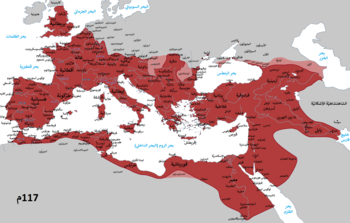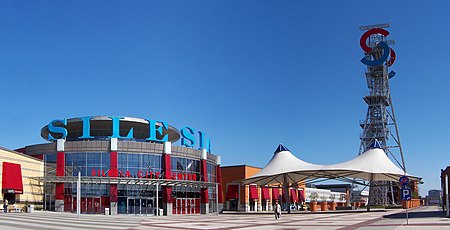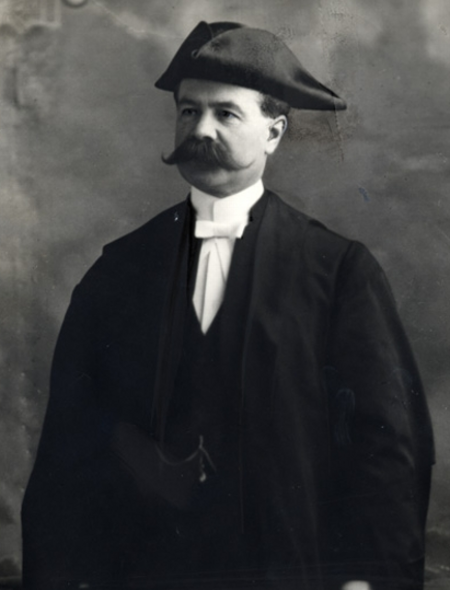Battle of Beaver Dam Creek
| |||||||||||||||||||||||||||||||||||
Read other articles:

الرومان في العربيةمعلومات عامةالمنطقة شبه الجزيرة العربية التأثيراتأحد جوانب روما القديمة تعديل - تعديل مصدري - تعديل ويكي بيانات أنقاض مأرب القديمة في اليمن، محاصرة من قبل الرومان في عام 25 قبل الميلاد. كان للوجود الروماني في شبه الجزيرة العربية أسس في توسع الإمبراطورية تح�…

لمعانٍ أخرى، طالع الفارابي (توضيح). أبو نصر محمد الفارابي (بالفارسية: ابونصر محمد بن محمد فارابی) صورة الفارابي كما تظهر على عملة كازاخستان فئة 200 تينغ معلومات شخصية الميلاد 874 مفاراب، بلاد ما وراء النهر (كازاخستان حاليا)، أو فارياب، أفغانستان الوفاة 950 مدمشق، سوريا…

Эмиттерный повторитель на основе npn-транзистора Используемая на практике схема усилителя мощности переменного сигнала на эмиттерном повторителе. Резисторы R 1 {\displaystyle R_{1}} и R 2 {\displaystyle R_{2}} задают положение начальной рабочей точки транзистора («смещение»). C 1 {\displaystyle C_{1}} и C …

Pour les articles homonymes, voir Odermatt. Marco Odermatt Marco Odermatt sur le podium à Soldeu en 2023 Contexte général Sport Ski alpin Période active De 2013 à aujourd'hui Site officiel www.marcoodermatt.ch Biographie Nationalité Suisse Naissance 8 octobre 1997 (26 ans) Lieu de naissance Buochs Taille 1,84 m (6′ 0″) Poids de forme 82 kg (180 lb) Club SC Hergiswil Palmarès Médailles obtenues Compétition Or Arg. Bro. Jeux olympiques d'hiver 1 0 0 Championna…

Species of butterfly Common banded peacock in Burdwan, West Bengal in Chinnar Wildlife Sanctuary, Kerala Scientific classification Domain: Eukaryota Kingdom: Animalia Phylum: Arthropoda Class: Insecta Order: Lepidoptera Family: Papilionidae Genus: Papilio Species: P. crino Binomial name Papilio crinoFabricius, 1792 Papilio crino, the common banded peacock,[1][2] is a species of swallowtail (Papilionidae) butterfly found in parts of the Indian subcontinent, including India, N…

Main entrance Silesia City Center is a shopping mall in Katowice, Silesia, Poland. It was opened in 2005 as the first modern shopping mall in Katowice.[1] In 2015 it has been described as the largest shopping mall in the Silesia region.[2] Its total area covers a few thousand square metres, of which 650 000 sq metres is a trade zone, 100 000 sq metres is a housing estate and 600 000 sq metres is an office site. It is situated in Katowice along 107 Chorzowska Road (the land previo…

Мелодичный дэт-метал(мелодэт) Направление метал и экстремальный метал Истоки хеви-метал, трэш-метал, дэт-метал[1], пауэр-метал Время и место возникновения Начало – середина 1990-х, Англия, Швеция Музыкальные инструменты Вокал (гроулинг, харш, скриминг, чистый вокал),…

Bangladesh Export Processing Zones Authority (BEPZA)Agency overviewJurisdictionGovernment of BangladeshHeadquartersBEPZA Complex, House no- 19/D, Rd No. 6, Green Rd, Dhaka 1205Agency executivesSheikh Hasina (Prime Minister of Bangladesh), Governing ChairmanMajor General Abul Kalam Mohammad Ziaur Rahman, ndc, psc, Executive ChairmanParent departmentPrime Minister's OfficeWebsitewww.bepza.gov.bd The Bangladesh Export Processing Zones Authority (BEPZA) (Bengali: বাংলাদেশ রপ্�…

Joey Bosa Bosa con los Chargers.Datos personalesApodo(s) JBNacimiento Fort Lauderdale, Florida, Estados Unidos11 de julio de 1995 (28 años)Nacionalidad(es) EstadounidenseAltura 1,96 m (6′ 5″)Peso 127 kg (279 lb)Carrera deportivaDeporte Fútbol americanoEquipo universitario Ohio StateClub profesionalDraft de la NFL 1.ª ronda (puesto 3), 2016Club Los Angeles ChargersLiga NFLPosición Defensive endDorsal(es) 97Tacleadas 240Sacks 47.5Balones sueltos forzados 5Trayectoria S…

Political party in the UK Conservative Workers & Trade Unionists Founded2015Honorary PresidentRobert Halfon, MP[citation needed]DirectorSpencer Pitfield[1]Deputy directorRichard ShortParent organisationConservative PartyWebsitehttps://www.unionblue.org.ukPolitics of UK The Conservative Workers & Trade Unionists (CWTU) is an organisation within the British Conservative Party made up of Conservative-supporting trade unionists.[2][3][4] in the United …

一中同表,是台灣处理海峡两岸关系问题的一种主張,認為中华人民共和国與中華民國皆是“整個中國”的一部份,二者因為兩岸現狀,在各自领域有完整的管辖权,互不隶属,同时主張,二者合作便可以搁置对“整个中國”的主权的争议,共同承認雙方皆是中國的一部份,在此基礎上走向終極統一。最早是在2004年由台灣大學政治学教授張亞中所提出,希望兩岸由一中各表的�…

Canadian politician Arthur Aimé BruneauMember of the Canadian Parliamentfor RichelieuIn office1892–1907Preceded byHector-Louis LangevinSucceeded byAdélard Lanctot Personal detailsBorn(1864-03-04)March 4, 1864St-Athanase d'Iberville, Canada EastDiedDecember 1, 1940(1940-12-01) (aged 76)Political partyLiberal Arthur Aimé Bruneau (March 4, 1864 – December 1, 1940) was a Canadian politician. Born in St-Athanase d'Iberville, Canada East, the son of J. J. Bruneau and Marie Louise Brune…

United States federal district court in Pennsylvania United States District Court for the Middle District of Pennsylvania(M.D. Pa.)LocationSylvia H. Rambo United States Courthouse(Harrisburg)More locationsWilliam J. Nealon Federal Building and U.S. Courthouse(Scranton)WilliamsportWilkes-BarreLewisburgAppeals toThird CircuitEstablishedMarch 2, 1901Judges6Chief JudgeMatthew W. BrannOfficers of the courtU.S. AttorneyGerard KaramU.S. MarshalWilliam M. Pughwww.pamd.uscourts.gov Th…

1964 film A Mission for Mr. DoddDirected byGünter Gräwert [de]Written byClaus HardtUtz UtermannBased onOut of Bounds by Arthur WatkynStarringHeinz RühmannMaria SebaldtRobert GrafCinematographyErich ClaunigkMusic byFranz GrotheProductioncompanyDivina-FilmDistributed byGloria FilmRelease date 14 February 1964 (1964-02-14) Running time98 minutesCountryWest GermanyLanguageGerman A Mission for Mr. Dodd (German: Vorsicht Mister Dodd) is a 1964 West German comedy film dir…

Accumulation of matter around a planet Circumplanetary disk around exoplanet PDS 70c (point-like source on the right side) A circumplanetary disk (or circumplanetary disc, short CPD) is a torus, pancake or ring-shaped accumulation of matter composed of gas, dust, planetesimals, asteroids or collision fragments in orbit around a planet. They are reservoirs of material out of which moons (or exomoons or subsatellites) may form.[1] Such a disk can manifest itself in various ways. In August …

Winter in TokyoPoster filmSutradaraFajar BustomiProduserYoen KDitulis olehIlana TanPemeranPamela BowieDion WiyokoKimberly RyderMorgan OeyBrandon Nicholas SalimFerry SalimBrigitta CynthiaTanggal rilis11 Agustus 2016Durasi103 MenitNegara IndonesiaBahasaBahasa IndonesiaBahasa Jepang Winter in Tokyo merupakan film drama romantis Indonesia yang diadaptasi dari Novel berjudul sama karya Ilana Tan.[1] Plot Bercerita tentang Ishida Keiko dan Nishimura Kazuto. Keiko adalah seorang wanita blestera…

Symbol celebrating a doctorate in Spanish and Hispanic universities An example of the victor symbol. The victor symbol (Spanish: víctor or vítor) is an emblem that is painted on the walls of some Spanish and Latin American universities to commemorate students who have received the degree of doctorate. The custom dates back to the 14th century, and the symbol has historically been used at older universities in the Spanish-speaking world, such as the University of Salamanca,[1] the Unive…

Pakistani diplomat Inam-ul-HaqMinister of Foreign Affairs(caretaker)In office16 November 2007 – 24 March 2008PresidentPervez MusharrafPrime MinisterMuhammad Mian SoomroPreceded byKhurshid Mahmud KasuriSucceeded byShah Mehmood QureshiMinister of State for Foreign AffairsIn office21 June 2002 – 23 November 2002PresidentPervez MusharrafPreceded byAbdul SattarSucceeded byKhurshid Mahmud KasuriForeign Secretary of PakistanIn office17 February 2000 – 21 June 2002Preced…

Fountain and sculpture in Portland, Oregon Shemanski FountainShemanski Fountain in 2013ArtistCarl L. LindeYear1926 (1926)TypeFountainMediumSandstoneDimensionsHeight: 144 in (3.7 m);Diameter: 224 in (5.7 m)LocationPortland, OregonCoordinates45°31′02″N 122°40′56″W / 45.517282°N 122.682144°W / 45.517282; -122.682144OwnerCity of Portland Rebecca at the WellRebecca at the WellDetail of Rebecca at the Well in 2008ArtistOliver L. BarrettYear1…

International sporting eventWomen's RS:X at the 2015 Pan American GamesVenueRoyal Canadian Yacht ClubDatesJuly 12 - July 18Competitors6 from 6 nationsMedalists Patrícia Freitas Brazil Demita Vega Mexico Marion Lepert United States2019» Sailing at the2015 Pan American GamesQualificationEventsRS:XmenwomenLasermenLaser Radialwomen49er FXwomenSunfishopenSnipeopenLightningopenHobie 16openJ/24openvte The women's RS:X competition of the s…


